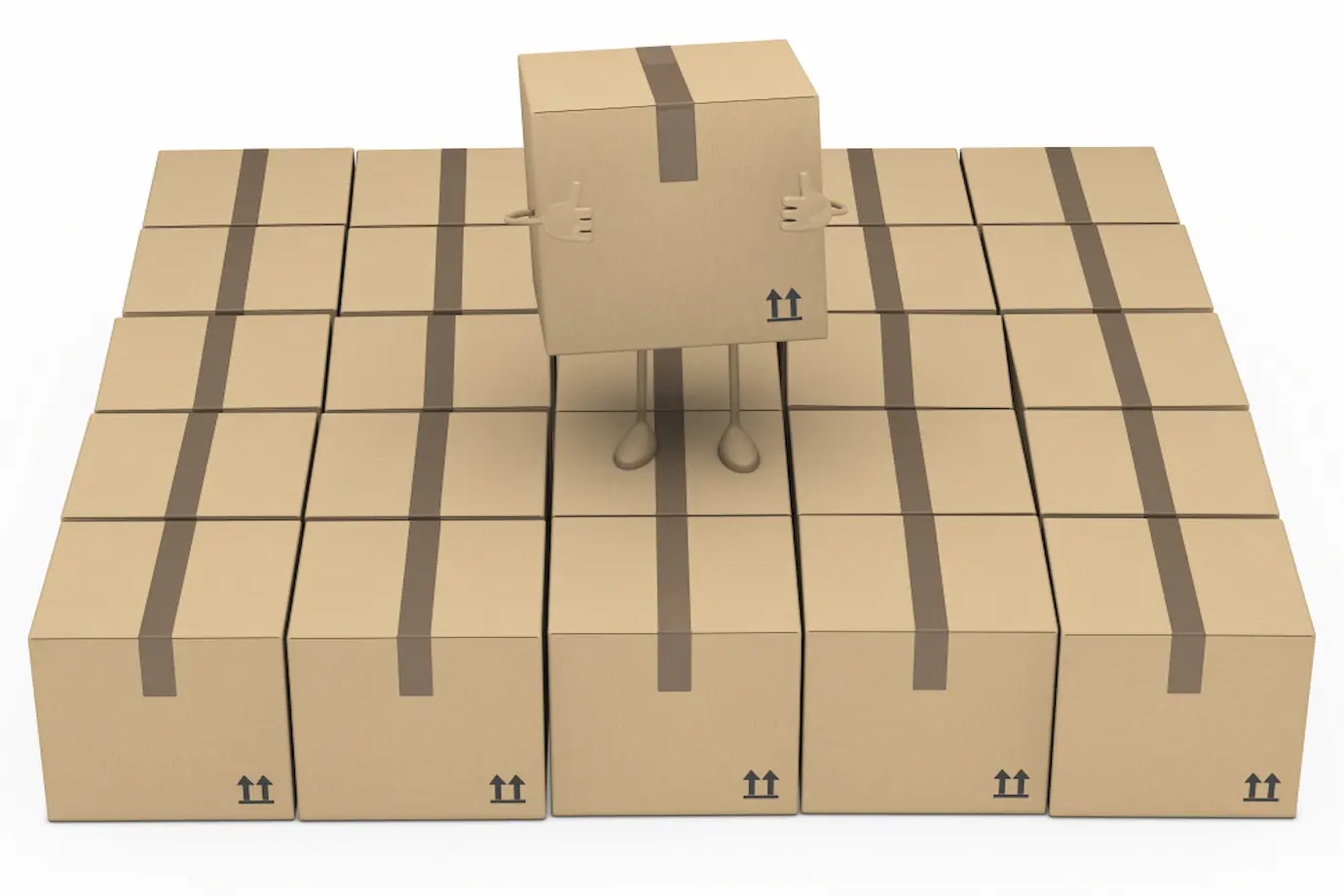How Much Does a Cardboard Box Weigh? A Complete Guide

It sounds like a straightforward question. But the answer? Not so simple.
From small eCommerce shops to global logistics companies, cardboard boxes are everywhere. Yet, most people don’t realize how much thought goes into picking the right one, not just for protection, but for weight, cost, and shipping efficiency.
So let’s break it down with clarity, real numbers, and insights that help you make smarter packaging choices.
How Much Does a Cardboard Box Weigh
There’s no single answer to this.
The weight of a cardboard box depends on a few key variables: the size of the box, the material it’s made of, and how thick or durable that material is. These factors aren’t just technical details; they directly affect shipping costs, handling, and even your sustainability footprint.
Material
The material a cardboard box is made from does more than just affect how it feels, it directly influences its weight, durability, and cost. Not all cardboard is created equal, and knowing the difference helps you choose smarter for your packaging needs.
Let’s break down the three most common materials:
Flat Boxes (Single-Wall Corrugated Cardboard)
Flat boxes are built for efficiency. Made from single-wall corrugated cardboard, they strike a solid balance between strength and lightness. These are the go-to choice for everyday shipping especially when you want to keep the box weight low but still offer decent protection. A standard flat box typically weighs around 170 to 200 grams.
Corrugated Cardboard Boxes
Corrugated cardboard uses a sandwich-style construction, an inner liner, outer liner, and a fluted layer in between. This structure adds bulk and strength, which naturally increases the weight. A medium-sized box made with this material might weigh around 500 grams, but go larger or thicker, and it easily crosses 1 kilogram. Ideal for heavier or fragile items.
Kraft Paper Boxes
Kraft paper is known for its natural, rugged feel and its eco-friendliness. It’s also surprisingly strong for how light it is. Boxes made from kraft paper usually come in at the lower end of the weight spectrum roughly 150 to 180 grams for a medium-sized box. They’re a popular choice for brands that want sustainable, minimal packaging.
Size and Thickness
Material is just one part of the equation. The size and thickness of the cardboard also have a major impact on a box’s weight.
Let’s start with size.
Naturally, the larger the box, the more material it takes to build and the heavier it becomes. A small 6 x 6 x 6 inch box might weigh around 120 to 150 grams. Increase that to a 12 x 12 x 12 inch box, and you’re looking at roughly 200 to 250 grams. By the time you get to something like 24 x 24 x 24 inches, that can jump to 400 grams or more.
Now add thickness to the mix. A thicker box, say, double-wall instead of single-wall, might use the same dimensions, but it’ll weigh significantly more. That’s because there’s more material compacted into the same shape, designed to add strength for heavier items.
Does Box Construction Affect Cardboard Weight?
Different box types use different construction methods, and those structural choices influence both weight and performance. Here’s how it breaks down:
Flat Boxes: Built for simplicity
Flat boxes are usually made with a single layer of corrugated cardboard. That means one flat sheet paired with a fluted layer, giving you a box that’s lightweight, but not flimsy. These are ideal for shipping flatter items like books, shirts, or documents.
Corrugated Cardboard Boxes: More layers, more strength
Their construction involves a fluted inner layer sandwiched between two flat outer sheets. This three-layer design adds thickness and structural integrity which is why these boxes can hold heavier or more fragile items. But those extra layers naturally add more weight. It’s a calculated trade-off: heavier box, but much better protection.
Kraft Paper Boxes: Lightweight and eco-conscious
Kraft boxes skip the fluting altogether and rely on strong kraft paper made through a chemical process that strips away weaker fibers. The result is a box that’s surprisingly strong for its weight. While not suited for very heavy items, these boxes are perfect for brands that want sustainable, good-looking packaging that’s also easy to handle.
How Much Does a Cardboard Moving Box Cost?
Cardboard moving boxes may seem inexpensive at first glance but when you’re preparing for a full move, the costs can add up quickly. The price of each box mainly depends on its size, and what it’s designed to hold.
Small boxes, often used for books, canned goods, and other heavy items, usually cost between $1 and $3 each.
Medium boxes, which are great for things like kitchen items or small appliances, tend to fall in the $1.60 to $3.50 range.
Large boxes, used for lighter but bulkier items like bedding or jackets, can go for $2 to $6 each.
And extra-large boxes, ideal for blankets and comforters, can cost as much as $3 to $8 apiece.
Now, if you multiply that by 30 or 40 boxes, a typical number for a household move, the expense adds up fast.
There are ways to cut costs without compromising on quality. Many people get sturdy second hand boxes for free from local stores, supermarkets, or even online marketplaces like Craigslist and Facebook Marketplace. Asking friends or neighbors who’ve recently moved can also be surprisingly effective.
Factors That Affect Cost of Cardboard Moving Boxes
Not all moving boxes are priced the same and it’s not just about size. Several factors come into play that can influence how much you’ll end up spending. If you’re planning a move or buying in bulk for business use, understanding these variables can help you avoid overspending.
Material and Durability
The type of material used plays a big role in pricing. Most people stick with cardboard boxes because they’re affordable and easy to find. Depending on size, these usually cost between $1 and $8 each.
If you’re looking for more durability, if your items need long-term storage or you’re moving during bad weather, plastic moving boxes are an alternative. They’re waterproof and reusable, but they come at a higher price: $10 to $30 per box. It’s a bigger upfront cost, but they’re often rented or reused to offset that.
Size and Type
The bigger the box, the higher the price but that’s only half the story. Specialty boxes like wardrobe boxes (designed for hanging clothes) or dish boxes with built-in dividers also push prices up. Expect to pay $10 to $20 for these more customized solutions.
Standard boxes fall into familiar price brackets: small ones for $1–2.50, medium for $1.60–3.50, and large for $2–6.
Quantity and Bulk Buying
The more you buy, the less you usually pay per box. Many retailers offer bulk discounts that make a noticeable difference. For example, buying a 25-pack of small boxes might bring the price down to around $1 each. If you’re moving an entire household, buying in bulk is almost always the smarter financial move.
Brand and Quality
Boxes from well-known brands like U-Haul or Home Depot tend to cost more, but you’re also paying for tested durability and consistent sizing, both helpful when stacking and storing. Budget options from places like Walmart or local grocery stores are cheaper but might be flimsier. It’s a trade-off between saving money and avoiding damage to your items.
In a Nutshell
Cardboard boxes may seem like simple items, but their weight and cost are shaped by multiple factors, material, size, thickness, and how they’re built. Lighter boxes like those made from kraft paper or flat single-wall construction are ideal for light items and lower shipping costs, while sturdier, multi-layer corrugated boxes are built for protection but come with added weight.
FAQs
How much does a cardboard packaging weigh in pounds?
A standard cardboard box typically weighs between 0.3 to 1 pound, depending on its size and thickness.
How much does a cardboard packaging weigh in ounces?
Most cardboard boxes weigh between 5 to 16 ounces, but heavier-duty boxes can exceed that.
How much does a cardboard packaging weigh in kilograms?
The weight usually falls between 0.15 to 0.45 kilograms, based on the box size and material.
Does UPS give free cardboard boxes?
Yes, UPS offers free boxes, but only for specific services like UPS Express and Next Day Air. For other shipments, you’ll need to purchase or provide your own boxes.

Jennifer James
My specialty is developing cost-effective, attractive, and appropriate packaging for protecting products. I am working with the company to design custom packaging that meets the client’s requirements.
